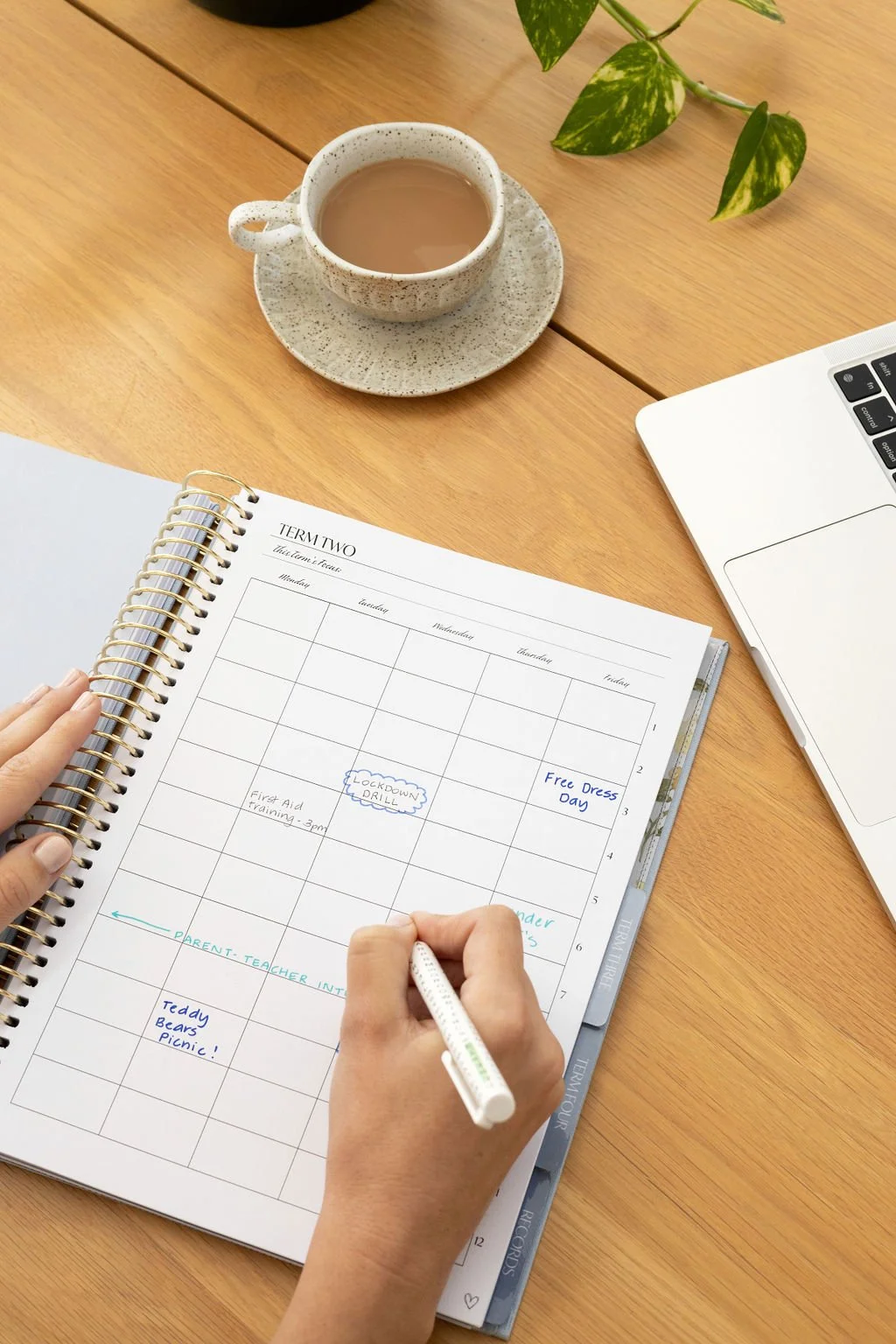How to Use Your Teacher Planner for Effective Lesson Planning and Organisation
As a teacher, organisation is key to staying on top of your busy schedule and ensuring your students receive the best education possible. A well-structured teacher planner is your best investment to help maximise everyday efficiency. Here’s a guide on how to use your teacher planner effectively, with features including a term overview, daily layout with six periods per day, to-do list, student data records, and professional development log.
Term Overview
The term overview section is the cornerstone of your planning. It allows you to map out the entire term at a glance, giving you a clear picture of what's ahead. Use this section to:
Highlight Important Dates: Mark holidays, school events, parent-teacher conferences exam periods and more. This helps in anticipating busy weeks and planning accordingly.
Set Goals: Outline your objectives for the term. Whether it's covering certain topics, improving student performance, or personal teaching goals, having them in the term overview keeps you focused.
Plan Assessments: Schedule tests, quizzes, and project deadlines. This ensures you distribute assessments evenly and avoid overwhelming your students (and yourself).
Daily Layout
Available in two layouts, the weekly and the daily layout are designed to streamline your day-to-day activities. With six periods per day, you can effectively plan your lessons and manage your time.
Lesson Planning: Allocate each period for a specific subject or class. Include brief notes on the topic, materials needed, and key points to cover. This makes transitioning between classes smoother and keeps you prepared.
Breaks and Prep Time: Don’t forget to schedule your breaks and preparation time. These periods are essential for maintaining your energy and staying organised throughout the day.
Reflection: At the end of each day, spend a few minutes reflecting on what worked well and what didn’t. This helps you improve your teaching strategies and address any issues promptly.
To-Do List
A dedicated to-do list section in your planner ensures that you keep track of tasks beyond teaching.
Prioritise Tasks: List out tasks in order of priority. This could include marking assignments, preparing lesson materials, or meeting with colleagues.
Set Deadlines: Assign due dates to each task to manage your time effectively and avoid last-minute rushes.
Check Off Completed Tasks: There’s nothing more satisfying than checking off tasks. It’s a great way to stay motivated and organised.
Student Data Records
Tracking student data is crucial for understanding their progress and addressing their needs. Your planner’s records section helps you keep all this information in one place.
Attendance: Maintain an attendance log to identify patterns and address any attendance issues promptly.
Grades: Record grades for assignments, tests, and projects. This allows you to monitor each student’s performance and provide timely feedback.
Behaviour Notes: Note any significant behavioural incidents or achievements. This is useful for parent-teacher conferences and understanding each student’s needs.
Professional Development Log
Continuing your education and professional growth is essential for staying current with teaching practices. Use the professional development log to track your growth.
Workshops and Courses: Record details of any workshops, courses, or seminars you attend. Include the date, topic, and key takeaways.
Goals and Reflections: Set professional development goals and reflect on your progress. This helps you stay focused on your growth and identify areas for improvement.
Certificates and Credits: Keep track of any certificates or credits earned. This is especially useful for fulfilling professional development requirements and advancing your career.
Monthly Overviews
Monthly overviews provide a more detailed breakdown of your term, helping you focus on shorter time frames. They serve as a bridge between your term overview and daily planning.
Monthly Goals: Set specific, achievable goals for each month. This keeps your objectives manageable and allows for adjustments as needed.
Important Dates and Deadlines: Highlight key dates and deadlines for the month. This includes marking periods, report card dates, and any special events.
Progress Check: Use this space to review your progress toward term goals, making any necessary adjustments to stay on track.
A well-utilised teacher planner is more than just a schedule—it’s a comprehensive tool that helps you manage your workload, track student progress, and continue your professional development. By making full use of the term overview, daily layout, to-do list, student data records professional development log, and so more, you’ll be better equipped to provide an excellent education to your students while maintaining your own well-being and professional growth. Happy planning!





